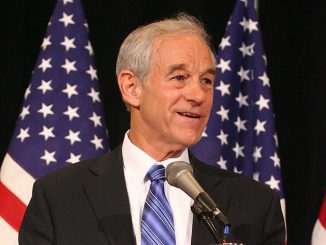According to Paul Krugman, we recently avoided a Great Depression because of Big Government; see here.
By any “reasonable” estimate, he says that the current stimulus program has saved up to 1 million jobs. Let’s imagine that this is true. According to the government’s own figures (see here), roughly 100 billion of the stimulus plan has been spent to date (the vast majority in the form of transfers; rather than purchases). So, my arithmetic is correct, this translates into only $100,000 per job. Well done, government.
But what really caught my eye in Krugman’s piece was this statement:
All of this [Big Government not slashing spending the way the private sector does during recession] has helped support the economy in its time of need, in a way that didn’t happen back in 1930, when federal spending was a much smaller percentage of GDP.
He is, of course correct in stating that the U.S. federal government was much smaller in 1930. And while he does not say so explicitly, I think he may leave the reader with the additional impression that, in addition to being small, the Hoover government actually chose to become smaller (mimicking the private sector in tightening its belt through hard times). The facts, as far as I can gather, seem to suggest something quite different.

According to this data, government outlays from 1930-33 increased by 9.0%, 19.4% and 46.5%, respectively. The latter two years in particular constituted classic deficit-financed expansionary policy (a policy, one might add, came under scathing criticism for recklessness by the Democratics in Congress, led by Roosevelt himself).
I’m not sure what to make of such data; but it does seem to dispell the myth of Hoover as a “do nothing” president.
It is of some interest, I think, to record how the economy recovered from recession prior to the era of Big Government. I seem to recall a fairly significant recession occurring in the early 1920s. Here is the data.

According to this data, the economy contracted by 3.3% and 4.3% in 1920 and 1921, respectively. The economy expanded by 4.5% and 11.4% in 1922 and 1923, respectively.
How did it manage this recovery after 2 years in the absence of Big Government? Why did a Great Depression not occur?
In fact, fiscal policy throughout this entire episode was significantly contractionary. How are we to make sense of this? Or, more precisely, I wonder how Krugman would make sense of this?
[Thanks to Doug Smith, for gathering this data]- Bulenox: Get 45% to 91% OFF ... Use Discount Code: UNO
- Risk Our Money Not Yours | Get 50% to 90% OFF ... Use Discount Code: MMBVBKSM
Disclaimer: This page contains affiliate links. If you choose to make a purchase after clicking a link, we may receive a commission at no additional cost to you. Thank you for your support!




Leave a Reply